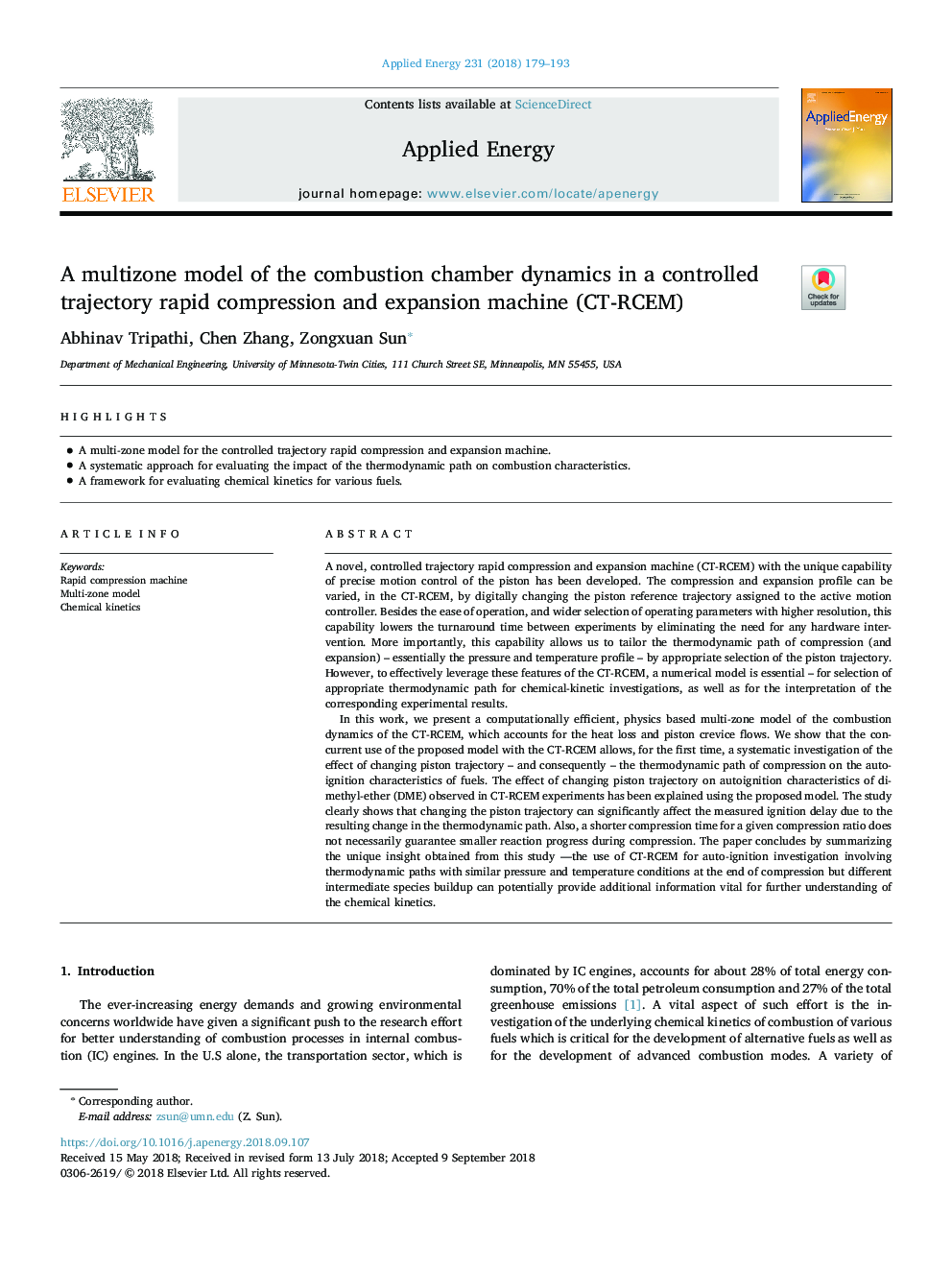| Article ID | Journal | Published Year | Pages | File Type |
|---|---|---|---|---|
| 10225230 | Applied Energy | 2018 | 15 Pages |
Abstract
In this work, we present a computationally efficient, physics based multi-zone model of the combustion dynamics of the CT-RCEM, which accounts for the heat loss and piston crevice flows. We show that the concurrent use of the proposed model with the CT-RCEM allows, for the first time, a systematic investigation of the effect of changing piston trajectory - and consequently - the thermodynamic path of compression on the auto-ignition characteristics of fuels. The effect of changing piston trajectory on autoignition characteristics of dimethyl-ether (DME) observed in CT-RCEM experiments has been explained using the proposed model. The study clearly shows that changing the piston trajectory can significantly affect the measured ignition delay due to the resulting change in the thermodynamic path. Also, a shorter compression time for a given compression ratio does not necessarily guarantee smaller reaction progress during compression. The paper concludes by summarizing the unique insight obtained from this study -the use of CT-RCEM for auto-ignition investigation involving thermodynamic paths with similar pressure and temperature conditions at the end of compression but different intermediate species buildup can potentially provide additional information vital for further understanding of the chemical kinetics.
Related Topics
Physical Sciences and Engineering
Energy
Energy Engineering and Power Technology
Authors
Abhinav Tripathi, Chen Zhang, Zongxuan Sun,
